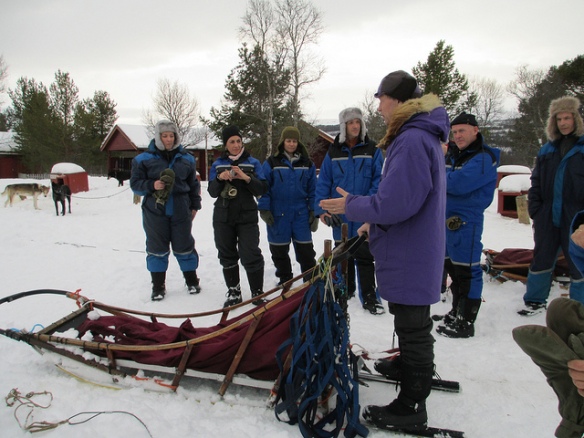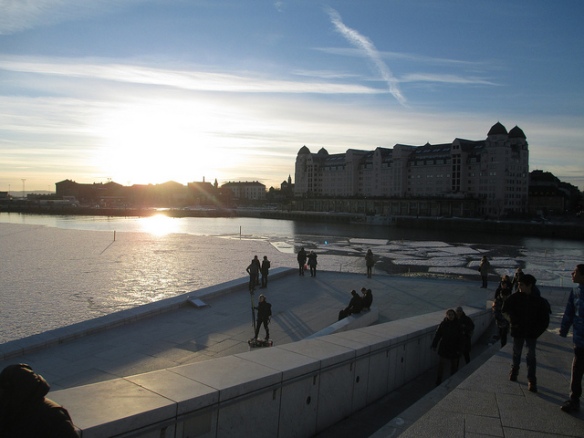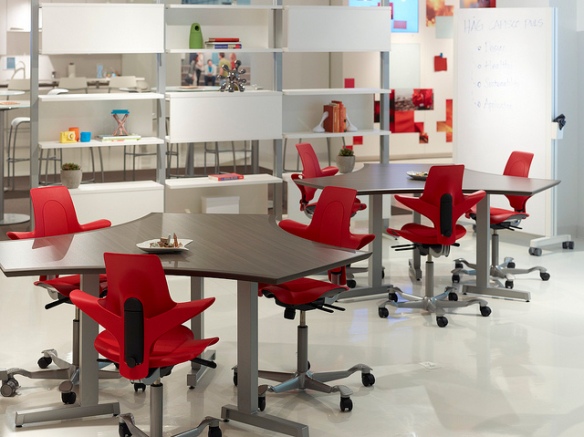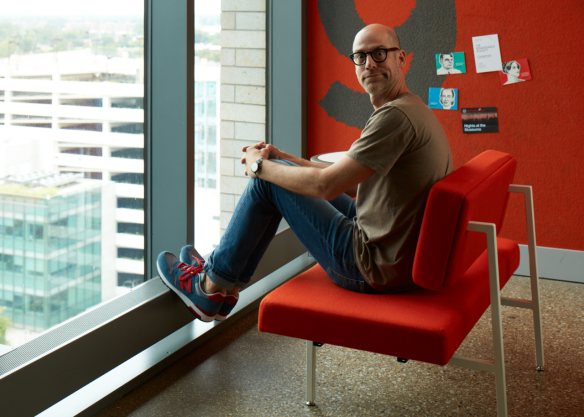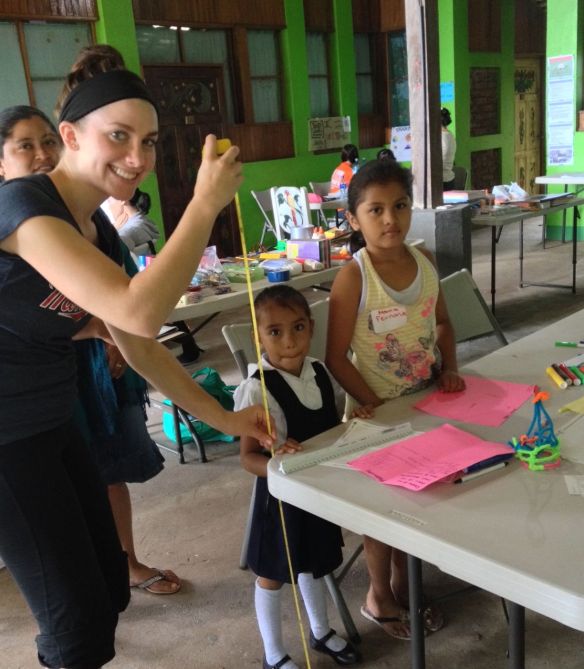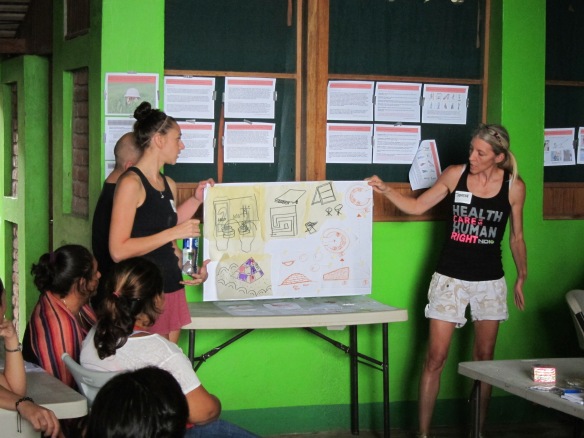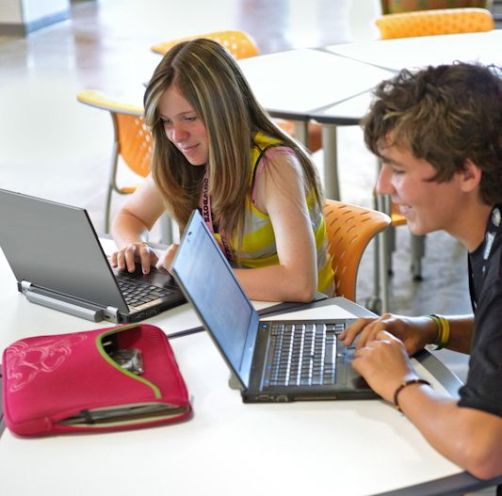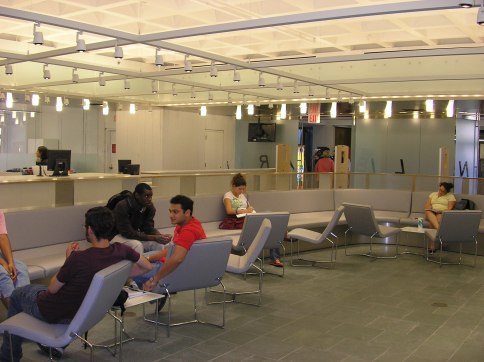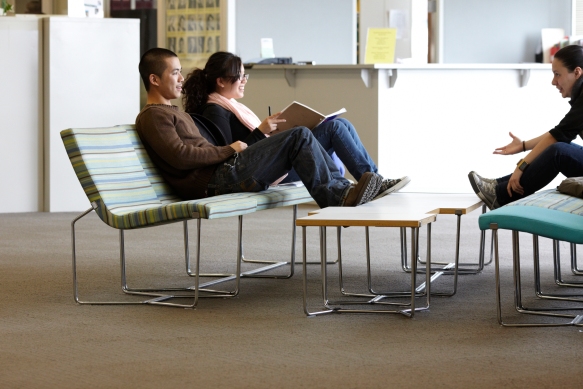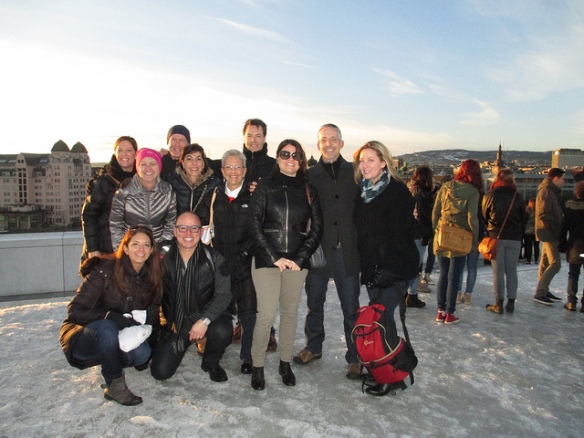
What does dog sledding have to do with seating ergonomics?
Or what does a manufacturing plant have in common with a herd of reindeer?
And why would two furniture companies based more than 4,000 miles apart decide that a partnership is a great idea?
For more than eight years, izzy+ has been making treks to visit the Norwegian side of its family and uncover answers to those questions and more, firsthand.
Most recently, in March, it was a group of 11 izzy+ sales representatives who traveled to Norway, where HAG has been based since it began designing and making workplace seating in 1943. izzy+ founder Chuck Saylor met HAG leaders in early 2004, when izzy+ was just three years old, and the two companies announced alliance at NeoCon that June.
“The corporate culture and beliefs at izzy+ and HAG are so much alike,” says seating product manager Nick Fernandez, who has visited HAG twice since starting at izzy+ in 2012. “When you’re at HAG you hear the same types of stories, and see the same passion for the same things. It’s also laid back like izzy+—they don’t take themselves too seriously on a day-to-day basis, but they take what they do really seriously, just like izzy+ does.”
While the commonalities of the two companies sparked the partnership, it’s their differences that inspire such a vibrant collaboration—and make these regular treks to Norway so important—according to Rune Akselberg, a native of Norway and Vice President of Sales and Market Development at izzy+.
“The culture in Norway is quite different than in the U.S., especially when it comes to caring for the environment and general health and wellbeing,” says Akselberg. “It’s a much stronger lesson when you can experience it for yourself—when you see the elk and the reindeer drinking from the stream right outside the HAG plant, you understand that everything is connected. The choices a company makes have a broad impact, well outside its doors.”
The Norway trips, which include time in Oslo, where HAG is headquartered, and Roros, the small mountain village where HAG’s main plant is located, are all about learning through active participation in the culture, not passive observation.
For instance, at the Oslo Opera House, izzy+ groups see another type of Scandinavian design, experiencing how form, function, and people come together. When they visit a dog sled camp, they learn basic dog sledding techniques, then harness the dogs on sleds and go on a thrilling ride into the mountains. After dog sledding, the group convenes around a big fire in a teepee, where they eat, drink, and share stories—perfect object lessons in HAG’s focus on movement and izzy+’s Better Together philosophy.
“Dog sledding is an experience like no other, and it perfectly demonstrates the HAG philosophy around balance, movement, and the environment,” says Akselberg.
Laura Connell, who is based at the Chicago izzy+ showroom, says immersing yourself in Norwegian culture really makes a difference. She uses the word “profound” to describe her experience in Norway this past March.
“Norway is the healthiest country I’ve ever been to. The culture is all about balance and movement, and how our bodies are supposed to function,” says Connell. “Everything we did on the trip tied into something we were learning about HAG. At HAG they have a very holistic approach to everything—the environment, corporate responsibility, ergonomics, design—it’s all there in every chair. It was great to see it all in action, both in how they work and how they live.”
Seeing HAG’s beliefs in action has really stuck with Fernandez, who says, “No decisions are made randomly or by accident at HAG. Every decision is held up against their brand standards. It doesn’t matter how cool something is or how easy it would be to sell. If it’s not up to all their standards, they won’t make it.”
More than anything, Akselberg loves seeing groups of izzy+ travelers return home with stories to tell and a deeper, more passionate understanding of HAG, their Norwegian family.
“I think this relationship with HAG has played a huge role in how we understand and talk about important issues like the environment, and health and wellbeing at izzy+,” Akselberg says. “Learning together, experiencing something new together, is a really powerful experience. izzy+ and HAG have so much in common, but also so much to learn from each other because of our different perspectives and cultures.”
* * * * *
Pictured at the top of the post is the izzy+ group that traveled to Norway in March (photo by Stacy Marcus). Below are photos of the izzy+ group preparing to go dog sledding; people congregating and walking on the new Oslo Opera House (both photos also by Stacy Marcus); and a recent outcome of the izzy+-HAG collaboration: HAG Capisco Puls seating, pictured with Dewey 6-Top tables.
